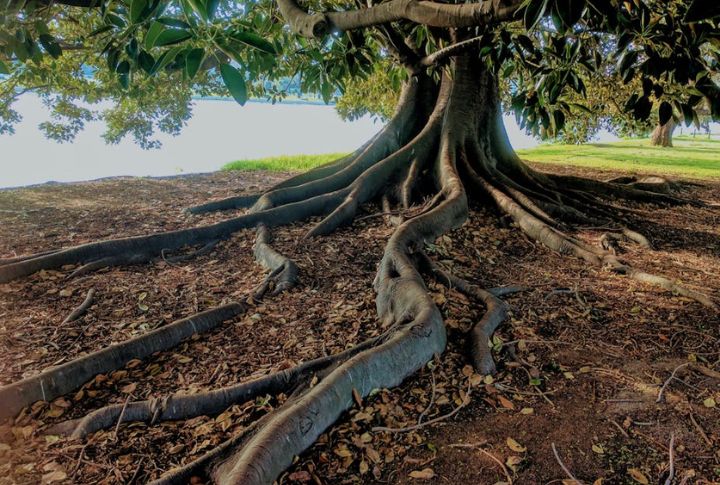
Trees provide more than just aesthetic value to a lawn, as they are a vital part of the scenery, offering shade, beauty, and environmental benefits. However, the roots that once nurtured the tree can slowly begin to wreak havoc on your lawn if they aren’t properly managed.
So, before your lawn suffers the consequences, it’s important to understand what tree roots can do—and how to stay one step ahead of the damage.
The Impact Of Roots On Your Lawn
Tree roots naturally extend outward to search for water and nutrients. While this is a necessary process for the tree’s survival, it can cause trouble when the roots spread too aggressively. This disrupts the aesthetic quality of your lawn and, in severe cases, can even affect tree health.
Recognizing The Signs Of Tree Root Problems
Early detection is required to prevent significant damage. So, if you spot any of these symptoms below in your lawn, it’s time to act before the problem worsens:
- Discolored or patchy grass: Grass may turn yellow or die off where tree roots are competing for water and nutrients.
- Visible roots: Roots that have pushed through the soil surface are a clear indicator of root problems.
- Uneven surfaces: Raised patches on the lawn are often caused by expanding tree roots.
- Watering issues: If your irrigation system isn’t functioning properly, tree roots could be obstructing the water flow.
Preventing Tree Root Damage To Your Lawn
To prevent any such damage to your yard, select the right species. Choosing trees with less invasive root systems, such as oaks or dogwoods, can prevent root-related issues.
Tree placement is another important factor in preventing root problems. Avoid planting trees too close to your lawn or infrastructure. Ideally, plant trees at least 20 feet away from any grassy areas to ensure their roots don’t encroach on your lawn. It’s also essential to plant your tree in well-draining soil.
For a long-term solution, consider installing root barriers around the tree. Root barriers are made from materials like plastic or metal, and they direct roots downward rather than letting them spread horizontally.
Addressing Existing Tree Root Problems
If you’ve already noticed the damaging effects of tree roots on your lawn, don’t worry—you can still address the problem.
One of the first things you can do is prune exposed roots. Check for tree roots growing above the soil surface, and then gently prune them back with a sharp, clean tool. This will help reduce the disruption to your lawn’s surface and minimize further damage. However, be careful not to over-prune, as this might cause stress to the tree.
Another solution for raised ground caused by expanding roots is to regrade the lawn. Add a layer of soil over the raised areas. Be sure to tamp the soil down gently to remove air pockets. Once the surface is level, reseed or lay sod to restore the overall aesthetics of your lawn.
Lastly, to address soil compaction caused by tree roots, consider aerating your lawn. It helps break up the compacted layers, allowing water and nutrients to finally reach the grass roots. Aeration can be successfully done using a manual or mechanical aerator, which creates holes in the soil to relieve compaction. This is especially helpful in areas where tree roots have caused extensive soil compression.
When To Seek Professional Help
While some root problems can be managed on your own, certain situations may require professional help. For instance, if tree roots are causing significant damage to infrastructure, such as sidewalks, pipes, or foundations, it’s best to call an arborist or a landscaping expert.
Additionally, in cases where the tree itself is suffering from root girdling or other issues that affect its health, an expert can assess the situation and recommend appropriate measures.
To sum up, a beautiful lawn and healthy trees aren’t mutually exclusive—you just need the right approach. With thoughtful planting, regular upkeep, and a watchful eye on those roots, your outdoor space can thrive above and below ground.

